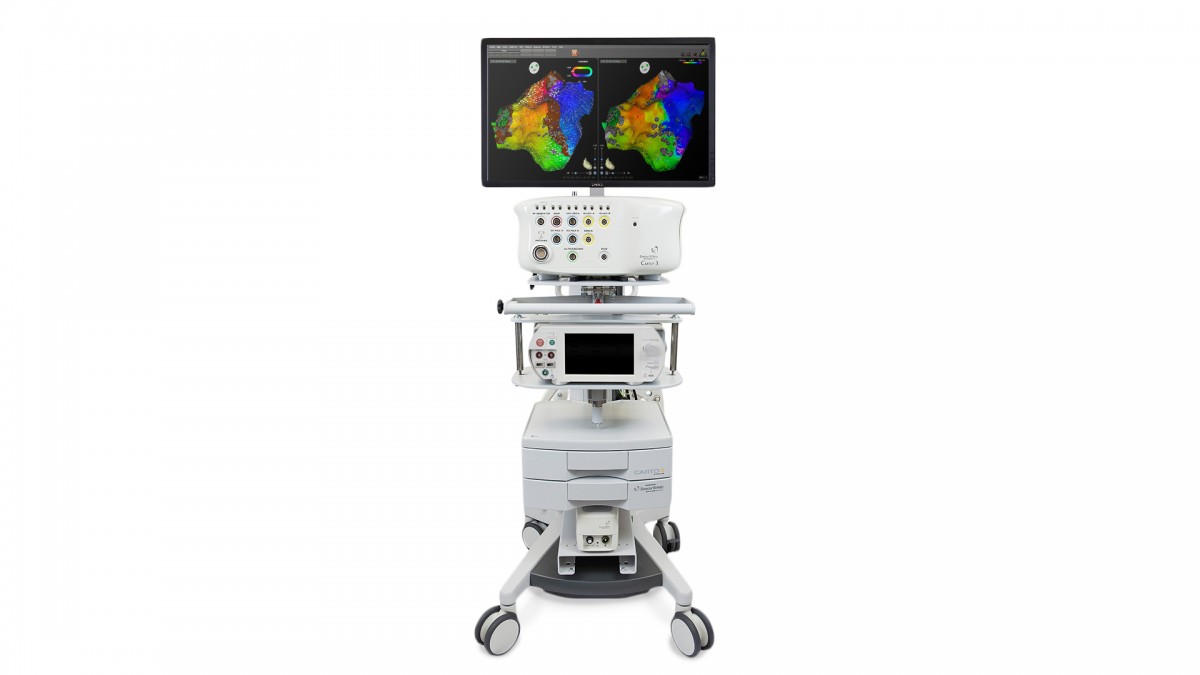
Spontaneous initiation of atrial fibrillation by ectopic beats originating in the pulmonary veins. Haissaguerre M, Jais P, Shah DC, Takahashi A, Hocini M, Quiniou G, et al. Simultaneous pace-ablate in AF ablation using the CARTO system may be safely used to render atrial lesion sets unexcitable. Pace-capture along the completed PVI lesion set remains common despite utilization of contact-force sensing RF ablation catheters and automated lesion annotation. There were 2.0 ± 3.3 RF applications during pacing via the distal ablation electrode per patient, and all lesions sets were successfully rendered unexcitable. At least one pace-capture site was noted in 22 of 50 PAF patients (44%), and pace-capture following PVI was most common at anterior and superior left atrial sites. SPA was successfully performed in all 250 patients without adverse event. Frequency and regional distribution of pace-capture following PVI was evaluated in a cohort of 50 consecutive patients undergoing catheter ablation of paroxysmal AF. Safety of feasibility of SPA was evaluated in 250 patients undergoing first-time AF ablation. We investigated the safety, feasibility, and utility of simultaneous pace-ablate (SPA) during AF ablation with the CARTO-3 system and a contact-force sensing RF ablation catheter.

We evaluated a method of pacing the distal ablation electrode during RF application in the CARTO system, thus avoiding repeated activation and inactivation of the pacing channel and facilitating immediate recognition of pace-capture loss. Pacing from the RF ablation electrode during RF application is prevented within the CARTO electroanatomic mapping system (Biosense Webster, Inc.) due to theoretical safety considerations. The CARTO system precisely located ectopic atrial foci, allowing a high success rate in the ablation of focal atrial tachycardias.Elimination of pace-capture along pulmonary vein isolation (PVI) lesion sets reduces atrial fibrillation (AF) recurrence in catheter ablation of paroxysmal AF. Nonetheless all procedures lasted less than 150 min, and fluoroscopy times were less than 30 minutes. No attempt was made to limit procedure or fluoroscopy time in our study. We were not able to treat one patient with a focus in the right atrial appendage. Immediate and 6 month success rate was 90%. The number of RF applications ranged from 1 to 11 (mean 4). The activation maps contained 85 +/- 35 points. Ectopic foci were located on the ostium of the coronary sinus (3 patients), crista terminalis (1 patient), right atrial appendage (1 patient), interatrial septum (1 patient) and in the pulmonary veins (4 patients). Immediate success was defined as suppression of ectopic atrial activity. Radiofrequency energy was applied to the earliest activation zone.


CARTO activation maps were constructed based on atrial tachycardia or premature beats. The population consisted of 10 consecutive patients with atrial tachycardia resistant to more than 2 drugs, 7 female, mean age 45 +/- 12 years. The aim of this study was to evaluate the efficacy of CARTO guided radiofrequency (RF) ablation of atrial foci. The CARTO system creates atrial activation maps that relate an anatomical location to an electrical potential. There is no precise relation between P wave morphology in surface ECG and atrial electrophysiology, and this fact makes it more difficult to locate ectopic atrial foci. Variable success rates in the ablation of atrial tachycardias using conventional electrophysiology have been achieved.


 0 kommentar(er)
0 kommentar(er)
